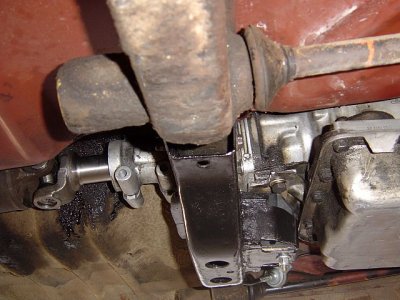Powerflite
Well-Known Member
I am getting a driveshaft type of vibration at 75mph and greater in my '70 Satellite. At lower speeds, everything feels great. It is there under acceleration as well as deceleration. I have double checked for bent rims and bad tires. All looks good. My U-joints are new.
It didn't vibrate before I:
replaced the original 8 1/4 with an 8 3/4 from a '69 B-body.
installed a 700-R4 trans with an extra length yoke and a conversion U-joint.
The output shaft of the trans is installed at the stock height and location so that isn't a part of the problem. From the picture, it looks like the yoke is too far out from the trans, but it is extra long so it is making the proper amount of contact inside the transmission. My question is if this extra-length yoke could be causing the high speed vibration. I don't want to go get the driveshaft lengthened with a new yoke if that isn't likely to fix the problem.
Thanks.

It didn't vibrate before I:
replaced the original 8 1/4 with an 8 3/4 from a '69 B-body.
installed a 700-R4 trans with an extra length yoke and a conversion U-joint.
The output shaft of the trans is installed at the stock height and location so that isn't a part of the problem. From the picture, it looks like the yoke is too far out from the trans, but it is extra long so it is making the proper amount of contact inside the transmission. My question is if this extra-length yoke could be causing the high speed vibration. I don't want to go get the driveshaft lengthened with a new yoke if that isn't likely to fix the problem.
Thanks.

















